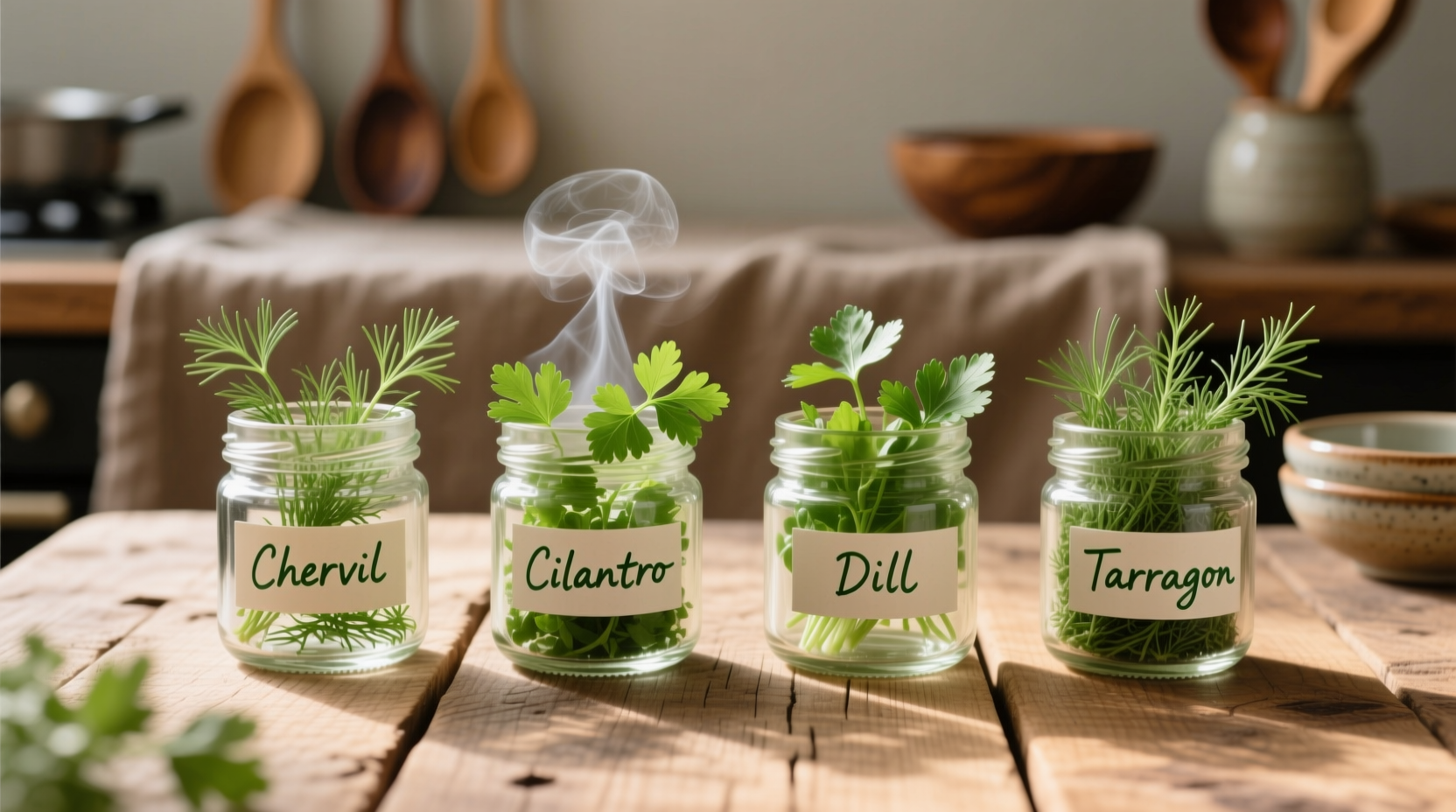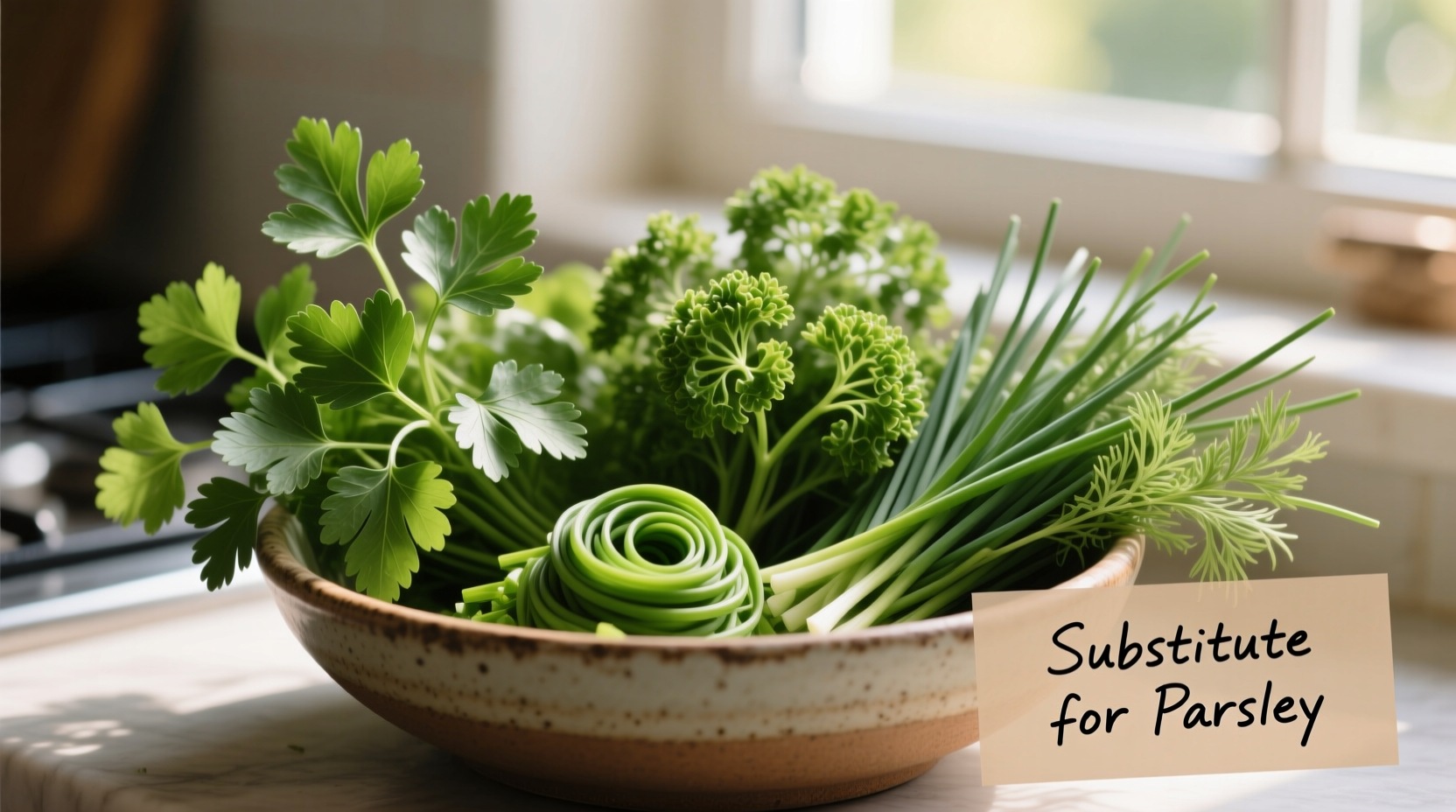If you're out of parsley, the best immediate substitutes are cilantro for fresh applications (use 1:1 ratio), dried parsley (use 1:3 ratio), or chives for garnishing. For soups and stews, celery leaves work well; for Mediterranean dishes, try a mix of dried oregano and basil. Always consider flavor compatibility with your dish before substituting.
Running out of parsley mid-recipe doesn't have to ruin your cooking. As a professional chef with years of experience in high-pressure kitchens, I've mastered the art of quick ingredient substitutions that maintain dish integrity. Whether you're preparing a delicate French sauce or a hearty Italian pasta, knowing the right parsley alternative can save your meal while adding unexpected depth to your flavors.
Why Parsley Matters in Cooking
Parsley isn't just a pretty garnish—it brings a fresh, slightly peppery flavor that brightens dishes without overpowering them. Its unique chlorophyll content provides that clean finish many recipes rely on. When substituting, you're not just replacing volume; you're compensating for this specific flavor profile and texture.
Immediate Solutions Based on What's in Your Pantry
Don't panic when your recipe calls for parsley and you're fresh out. Your solution depends entirely on what's already in your kitchen. Let's break it down by category:
Fresh Herb Alternatives
When you need that fresh herb quality, these substitutes work best:
| Substitute | Flavor Profile | Best For | Substitution Ratio |
|---|---|---|---|
| Cilantro | Stronger, citrusy, slightly soapy note | Mexican, Asian, and Latin American dishes | 1:1 (use slightly less if sensitive to cilantro) |
| Chives | Mild onion flavor, delicate texture | Garnishing, potato dishes, creamy sauces | 1:1 (finely chopped) |
| Dill | Grassy, slightly sweet anise notes | Fish, cucumber salads, tzatziki | 1:1 (use less in cooked dishes) |
| Tarragon | Distinctive anise/licorice flavor | Chicken, fish, béarnaise sauce | 1:2 (use half the amount) |
Dried Herb Alternatives
When fresh herbs aren't available, dried options can work surprisingly well if you adjust properly:
- Dried parsley: The obvious choice—use one-third the amount of fresh (1 tsp dried = 1 tbsp fresh)
- Dried chervil: Delicate anise flavor, excellent in French sauces (use 1:3 ratio)
- Celery leaf (dried): Earthy flavor that works well in soups and stews (use 1:2 ratio)
- Italian herb blend: Use sparingly in Mediterranean dishes (1/2 tsp per tablespoon fresh parsley)

Specialized Substitutes by Cuisine
Understanding regional cooking traditions helps select the most appropriate substitute:
Mediterranean Dishes
For Greek salads or Italian pasta, a combination of dried oregano and basil (in a 1:1 ratio) mimics parsley's earthy notes. The University of California's Agriculture and Natural Resources department confirms that Mediterranean cuisines historically used local herb combinations when primary ingredients were scarce, creating new flavor profiles that became traditional in their own right.
Middle Eastern Recipes
Cilantro works best here, as it's commonly used throughout the region. For tabbouleh specifically, increase the mint and add extra lemon juice to compensate for missing parsley's brightness.
French Cuisine
Chervil is the traditional French " parsley substitute"—it's actually one of the four fines herbes. If unavailable, a mix of chives and a tiny pinch of tarragon creates a similar effect. According to culinary historian Dr. Harold McGee's research on French herb usage, many classic French recipes evolved to incorporate available substitutes during winter months when fresh parsley was scarce.
What NOT to Use as Parsley Substitutes
Some common suggestions simply don't work:
- Basil: Too sweet and dominant for most parsley applications
- Mint: Overpowering in savory dishes (except specific Middle Eastern recipes)
- Thyme: Strong flavor that overwhelms delicate dishes
- Bay leaves: Completely different purpose and texture
Practical Substitution Guidelines
Follow these professional chef tips for successful substitutions:
- Consider the dish temperature: Add delicate substitutes like cilantro at the end of cooking
- Adjust for flavor intensity: Stronger herbs need reduced quantities
- Texture matters: Finely chop substitutes to match parsley's texture
- Taste as you go: Especially important with stronger substitutes
When to Skip the Substitute Entirely
Sometimes it's better to omit parsley than use an inappropriate substitute. This applies to:
- Dishes where parsley is the star ingredient (like tabbouleh)
- Recipes requiring parsley's specific chlorophyll content for color
- When no suitable substitute is available that matches the flavor profile
Remember that professional kitchens always keep dried parsley on hand specifically for these situations—it maintains flavor integrity better than most alternatives when properly stored.
Storing Parsley Properly to Avoid Future Shortages
Prevention beats substitution. Store fresh parsley by trimming stems, placing in water (like flowers), and covering loosely with a plastic bag in the refrigerator. This method, recommended by the USDA Food Safety and Inspection Service, extends freshness up to two weeks. For longer storage, chop and freeze in olive oil cubes—this preserves flavor better than drying for most culinary applications.











 浙公网安备
33010002000092号
浙公网安备
33010002000092号 浙B2-20120091-4
浙B2-20120091-4